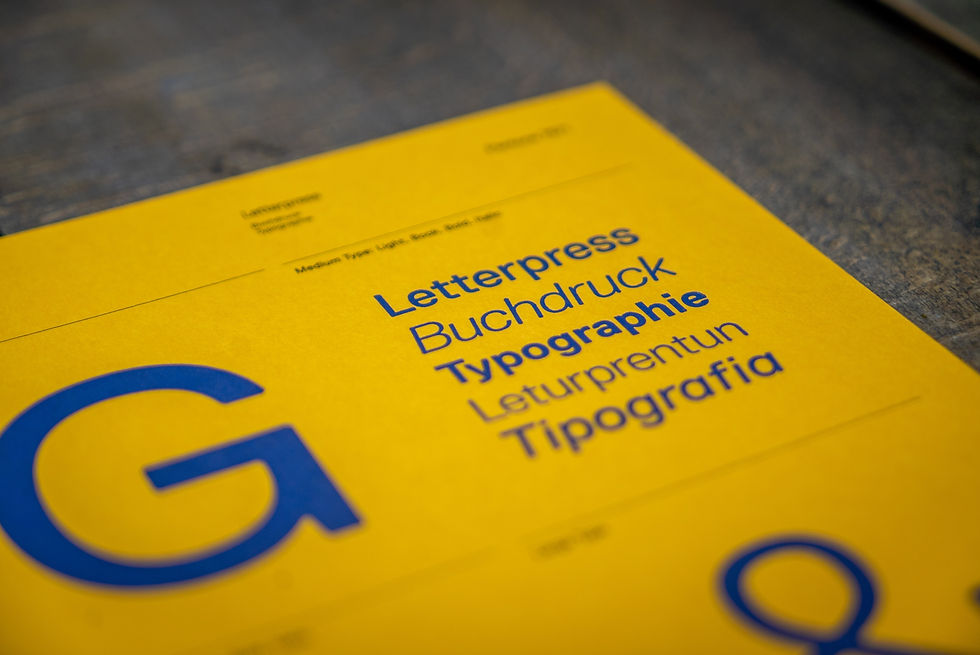Typography and Layout Design: Crafting Visual Communication
- artisanalleylearni
- May 18, 2024
- 3 min read

Typography and layout design are fundamental components of effective visual communication. They influence how information is perceived, understood, and appreciated by an audience. This article explores the principles of typography and layout design, providing you with the knowledge and techniques to create aesthetically pleasing and effective designs.
1. Understanding Typography
Typography is the art and technique of arranging type to make written language legible, readable, and appealing. It plays a crucial role in setting the tone and style of your design.
Key Elements of Typography:
Typeface and Fonts: A typeface is a family of fonts (e.g., Arial), while a font is a specific style and size within that family (e.g., Arial Bold, 12pt).
Hierarchy: Establishes the order of importance of text elements. Use different sizes, weights, and styles to guide the reader’s eye.
Alignment: Refers to the placement of text within a design. Common alignments include left, right, centered, and justified.
Spacing: Includes kerning (space between individual characters), leading (space between lines of text), and tracking (overall space between characters in a block of text).
2. Typography Principles
Applying typography principles helps enhance readability and convey the desired message effectively.
Legibility and Readability:
Legibility: Refers to how easily individual characters can be distinguished. Choose clear, simple typefaces for maximum legibility.
Readability: Refers to how easily a block of text can be read. Consider factors like type size, line length, and line spacing.
Contrast and Emphasis:
Contrast: Use contrasting typefaces, sizes, and weights to create visual interest and distinguish different text elements.
Emphasis: Use bold, italics, or color to highlight important information.
Consistency:
Uniformity: Maintain consistency in typefaces, sizes, and spacing throughout your design to create a cohesive look.
Style Guides: Develop a style guide to ensure consistent typography across all materials.
3. Understanding Layout Design
Layout design involves arranging visual elements on a page. A well-designed layout enhances readability, directs attention, and creates a harmonious composition.
Key Principles of Layout Design:
Balance: Distribute elements evenly to create a stable composition. Balance can be symmetrical (equal on both sides) or asymmetrical (different but still balanced).
Alignment: Align elements to create order and organization. Use grids to ensure consistent alignment.
Proximity: Group related elements together to establish a connection and improve readability.
Repetition: Repeat visual elements (colors, shapes, fonts) to create unity and reinforce the design.
Contrast: Use contrast in colors, shapes, and sizes to highlight important elements and create visual interest.
White Space: Also known as negative space, it refers to the empty space around elements. White space prevents clutter and enhances readability.
4. Crafting Effective Layouts
Creating effective layouts involves combining typography and visual elements to communicate your message clearly and attractively.
Steps to Craft a Layout:
Define the Purpose: Understand the goal of your design and the message you want to convey.
Create a Hierarchy: Determine the most important elements and design them to stand out.
Choose a Grid System: Use a grid to organize elements and maintain consistency.
Place Visual Elements: Position images, graphics, and text in a way that guides the reader’s eye through the design.
Adjust and Refine: Continuously tweak the layout, ensuring balance, alignment, and proper use of white space.
5. Combining Typography and Layout
The combination of typography and layout design creates a powerful tool for visual communication. Here are some tips to harmonize the two:
Complementary Fonts: Choose typefaces that complement each other. For instance, pair a serif font with a sans-serif font for contrast.
Visual Flow: Arrange elements to guide the reader through the design naturally. Use typography to establish a clear hierarchy.
Color and Contrast: Use color to highlight key elements and create contrast between different sections.
Consistency and Unity: Maintain a consistent style throughout the design to ensure unity and coherence.
6. Practical Applications
Understanding typography and layout design principles is crucial for various applications, including:
Print Media: Books, magazines, brochures, and posters.
Digital Media: Websites, mobile apps, social media graphics, and email newsletters.
Advertising: Flyers, billboards, and digital ads.
Branding: Business cards, letterheads, and packaging.
Conclusion
Mastering typography and layout design is essential for creating visually appealing and effective communications. By understanding the principles of typography, applying layout design techniques, and harmonizing the two, you can craft designs that are not only aesthetically pleasing but also effectively convey your message. Embrace the art of visual communication, and let your designs speak volumes.




Comments